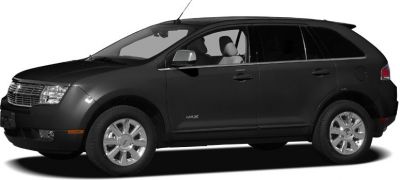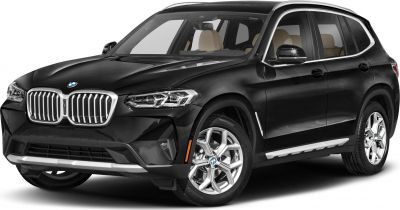 2021 Ford Equator Dimensions, Size & Specs
2021 Ford Equator Dimensions, Size & SpecsMeasurements of the 2021 Ford Equator, engineered for optimal performance and comfort
| Dimensions | |
|---|---|
| Length: | 4630-4905 mm182.3-193.1 in15.2-16.1 ft |
| Width: | 1935 mm76.2 in6.3 ft |
| Height: | 1706-1755 mm67.2-69.1 in5.6-5.8 ft |
| Trunk Capacity: | 277-448 liter9.8-15.8 cu ft |
| Trunk Capacity (Max): | 1075-1422 liter38.0-50.2 cu ft |
| Weight Specifications | |
| Curb Weight: | 1630-1830 kg3594-4034 lbs |
| Tire Specifications | |
| Rims Sizes: |
|
| Tire Sizes: |
|
The Ford Equator, produced from 2021 to 2024, is a midsize SUV that balances spaciousness, versatility, and modern design tailored for families and adventure seekers alike. Measuring between 4630 mm and 4905 mm (182.3 - 193 inches) in length, this SUV offers ample cabin space while maintaining maneuverability for urban driving. The width ranges narrowly from 1930 mm to 1935 mm (76.0 - 76.2 inches), providing a stable stance on the road without excessive bulk. Height varies from 1706 mm to 1755 mm (67.2 - 69.1 inches), contributing to an elevated seating position and commanding road visibility typical of SUVs in its class.
Weight-wise, the Ford Equator spans from 1630 kg up to 1830 kg (approx. 3593 - 4036 lbs), indicating robust construction while balancing fuel efficiency and performance. This curb weight range reflects a build that supports advanced safety features and a comfortable ride quality. When it comes to luggage capacity, the Equator impresses with a flexible range from 277 liters to 448 liters (9.8 - 15.8 cubic feet) of cargo space behind the rear seats, expanding significantly to between 1075 liters and 1422 liters (37.9 - 50.2 cubic feet) when the rear seats are folded down. This versatility makes it suitable for both daily errands and longer trips requiring extra cargo room.
The Ford Equator rides on rims sized 18, 19, or 20 inches, paired with tires in sizes 235/50 R19, 245/45 R20, and 235/55 R18. This range of tire and rim options balances road grip, comfort, and styling preferences. Overall, the Ford Equator stands out in the competitive midsize SUV segment as a practical, spacious, and adaptable vehicle with balanced dimensions designed to accommodate passengers and cargo efficiently without compromising driving dynamics.
Discover the standout features that make the 2021 Ford Equator a leader in its class
Have a question? Please check our knowledgebase first.
The Ford Equator SUV, produced from 2021 to 2024, has a length that varies between 4630 mm to 4905 mm (approximately 182.3 inches to 193.1 inches). This range depends on the specific trim and configuration, which may affect body styling or additional features. Its length places it in the mid-to-large SUV segment, catering well to families and individuals needing spacious interiors while maintaining maneuverability in urban driving conditions.
The width of the Ford Equator ranges between 1930 mm and 1935 mm (about 76.0 to 76.2 inches). This width provides a stable and comfortable stance on the road, enhancing handling and passenger comfort. However, when parking or navigating through tight spaces, the nearly 2-meter width means drivers should be mindful of narrower spots, although it remains manageable by modern SUV standards and equipped with parking aids that are typically standard or optional in this model.
The Ford Equator has a height ranging from 1706 mm to 1755 mm (around 67.1 to 69.1 inches). This height offers a commanding driving position typical of SUVs, contributing to better visibility on the road. The height also accommodates a spacious interior and flexible seating arrangements. Depending on roof rails or antenna options, as well as suspension settings, the exact height may vary slightly across different trims.
The curb weight of the Ford Equator ranges from 1630 kg to 1830 kg (approximately 3595 to 4035 pounds). This weight depends on the model variant, equipment levels, and drivetrain options. The weight impacts fuel efficiency, handling, and ride comfort. Generally, the Equator balances weight for road stability without becoming excessively heavy, thereby maintaining good performance and safety characteristics.
The luggage capacity of the Ford Equator ranges from 277 liters to 448 liters (about 9.8 to 15.8 cubic feet) with the rear seats upright, providing ample room for everyday cargo needs such as groceries or small luggage. When the rear seats are folded down, capacity expands significantly to between 1075 liters and 1422 liters (around 37.9 to 50.2 cubic feet), allowing users to transport larger items, making it versatile for both passengers and cargo.
The Ford Equator offers multiple rim sizes including 18, 19, and 20 inches, designed to balance comfort and performance. Corresponding tire sizes for these rims are 235/55 R18, 235/50 R19, and 245/45 R20 respectively. These tire options provide a good mix of road grip, ride comfort, and sporty handling, while also allowing for customization based on driver preferences or local road conditions.
The Ford Equator generally fits within a standard residential garage. Typical garages have door widths around 2.4 to 2.7 meters (94.5 to 106 inches) and door heights above 2 meters (78.7 inches). With a width up to 1.935 meters (76.2 inches) and height up to 1.755 meters (69.1 inches), the Equator leaves sufficient clearance for door width and overhead space. However, drivers should consider any additional rooftop accessories that might increase height and measure their specific garage dimensions to confirm fit.
The Ford Equator introduced from 2021 marks a relatively new model without a direct predecessor in Ford's SUV lineup under the same name. It is designed to fill a mid-size SUV role, offering dimensions that are larger than Ford’s compact SUVs like the EcoSport but somewhat similar or slightly larger than models like the Ford Edge or Territory in various markets. Its size aims to appeal to a family SUV segment with more interior space and cargo versatility compared to older or smaller Ford SUVs.
In comparison to similar mid-size SUVs, the Ford Equator holds its own in terms of interior space and cargo capacity. With lengths up to 4905 mm and a wide stance, it competes closely with vehicles like the Toyota Highlander, Hyundai Santa Fe, and Honda Passport. Its luggage space, especially with seats folded (up to 1422 liters), is competitive, offering versatile usage for families and active lifestyles. While some rivals may be slightly larger or smaller, the Equator provides a balanced option combining size, comfort, and utility.
The Ford Equator features robust SUV styling with a modern, muscular body that appeals to families and outdoor enthusiasts. It typically includes advanced tech and safety features standard or optional across trims, such as driver assistance systems, infotainment with touchscreen interfaces, and connectivity options. Inside, it prioritizes spacious seating arrangements and flexible cargo solutions, aimed at comfort and practicality. The Equator is also engineered to deliver a smooth driving experience with stable handling courtesy of its weight distribution and suspension setup.
Discover similar sized cars.

| Production: | 2017-2022 |
|---|---|
| Model Year: | 2017 |
| Length: | 4686-4702 mm184.5-185.1 in |
| Width: | 2163 mm85.2 in |
| Height: | 1666-1693 mm65.6-66.7 in |

| Production: | 2006-2010 |
|---|---|
| Model Year: | 2007 |
| Length: | 4737 mm186.5 in |
| Width: | 2212 mm87.1 in |
| Height: | 1753 mm69.0 in |

| Production: | 2021-2024 |
|---|---|
| Model Year: | 2022 |
| Length: | 4708-4723 mm185.4-185.9 in |
| Width: | 2138 mm84.2 in |
| Height: | 1676 mm66.0 in |

| Production: | 2021-2023 |
|---|---|
| Model Year: | 2020 |
| Length: | 4705 mm185.2 in |
| Width: | 1890 mm74.4 in |
| Height: | 1670-1680 mm65.7-66.1 in |

| Production: | 2024-present |
|---|---|
| Model Year: | 2024 |
| Length: | 4520-4710 mm178.0-185.4 in |
| Width: | 1860-1880 mm73.2-74.0 in |
| Height: | 1630-1720 mm64.2-67.7 in |

| Production: | 2015-2018 |
|---|---|
| Model Year: | 2015 |
| Length: | 4690-4700 mm184.6-185.0 in |
| Width: | 2179 mm85.8 in |
| Height: | 1680-1690 mm66.1-66.5 in |

| Production: | 2012-2016 |
|---|---|
| Model Year: | 2013 |
| Length: | 4690 mm184.6 in |
| Width: | 1880 mm74.0 in |
| Height: | 1680 mm66.1 in |

| Production: | 2017-present |
|---|---|
| Model Year: | 2019 |
| Length: | 4693 mm184.8 in |
| Width: | 1903 mm74.9 in |
| Height: | 1679 mm66.1 in |
